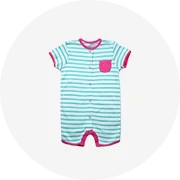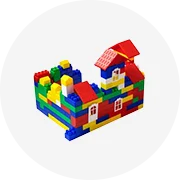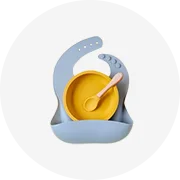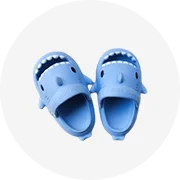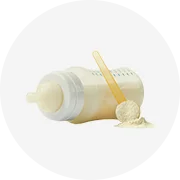Types of RC Car Roll Cages
An RC car roll cage is a critical component for remote control cars, particularly those designed for off-road and racing environments. Its primary function is to enhance the structural integrity of the vehicle, providing a protective framework for internal components. In the event of a crash or roll-over, the roll cage absorbs and distributes the impact force, minimizing damage to the car and protecting essential electronics.
Expert Tip: The right roll cage can significantly extend your RC car's lifespan by preventing catastrophic damage during inevitable crashes and rollovers. Consider it an investment in your RC car's longevity rather than just an accessory.
Scale Roll Cages
Designed to match specific full-size vehicles, these cages are used in competitions where scale realism is judged alongside performance. They provide authentic visual accuracy while offering functional protection.
Best for: Scale competitions, realism enthusiasts, collector models
Universal Roll Cages
Highly adaptable cages designed to fit a wide range of RC car models regardless of make or brand. These feature adjustable mounting points to accommodate different car sizes and configurations.
Best for: Multiple RC cars, versatility, budget-conscious buyers
Competition Roll Cages
Engineered specifically for racing applications, these lightweight, aerodynamic cages offer the optimal balance between protection and performance enhancement. They're designed to meet racing regulations while minimizing weight impact.
Best for: Racing competitions, high-performance applications, speed enthusiasts
Drift RC Roll Cages
Minimalist designs focused on weight reduction to maintain optimal handling for drift applications. When present, these cages offer basic protection without compromising the car's drifting capabilities.
Best for: Drift racing, style-focused builds, lightweight applications
| Roll Cage Type | Primary Purpose | Weight Impact | Protection Level | Customization Options |
|---|---|---|---|---|
| Scale Roll Cages | Visual realism + protection | Medium to High | High | Limited (designed for accuracy) |
| Universal Roll Cages | Versatile protection | Medium | Medium to High | High (adjustable design) |
| Competition Roll Cages | Racing performance | Low to Medium | Medium | Medium (regulation-dependent) |
| Drift RC Roll Cages | Weight reduction | Very Low | Low to Medium | High (style-focused) |
Specifications of RC Car Roll Cages
Understanding the technical specifications of RC car roll cages is crucial for selecting the right option for your specific model and driving needs. Manufacturers provide detailed specifications to help buyers make informed decisions.
Material
The construction material significantly impacts durability, weight, and performance. Common materials include:
- Steel: Maximum strength and durability but heaviest option
- Aluminum: Excellent strength-to-weight ratio with good corrosion resistance
- Carbon Fiber: Premium lightweight option with superior strength but higher cost
- Reinforced Nylon/Plastic: Budget-friendly option with moderate protection
Weight Considerations
Roll cage weight affects overall vehicle performance. Typical weight ranges:
- Lightweight Racing: 30-60g
- Standard Protection: 60-120g
- Heavy-Duty Off-Road: 120-200g+
Consider that every 50g of additional weight can reduce acceleration by approximately 5-8% depending on motor power.
| Specification | Description | Impact on Performance |
|---|---|---|
| Design & Structure | Number of bars, configuration, and geometry impact protection level and aesthetics | Affects aerodynamics, weight distribution, and roll-over protection |
| Dimensions | Length, width, height, and internal clearance measurements | Determines compatibility with specific RC car models |
| Mounting System | Includes mounting points and installation methods (bolts, clamps, adhesive) | Affects ease of installation, removability, and stability |
| Finish | Surface treatment like powder coating, galvanizing, or polishing | Provides environmental protection and aesthetic appeal |
| Compatibility | Specific models the cage is designed to fit | Ensures proper fitment and optimal protection |
Important: Always verify the exact dimensions and compatibility of an RC car roll cage with your specific model before purchasing. An ill-fitting roll cage can compromise protection and potentially cause additional damage during impacts.
Maintenance of RC Car Roll Cages
Regular maintenance is essential to ensure your RC car roll cage continues to provide optimal protection and performance. A well-maintained roll cage not only extends the lifespan of your RC car but also maintains its aesthetic appeal and structural integrity.
Regular Inspection
Perform thorough visual inspections after each use, especially following crashes or impacts. Pay special attention to:
- Stress points and joints for cracks or bending
- Mounting points for security and stability
- Protective coating for scratches or chipping
- Hardware for loosening due to vibration
Cleaning Procedures
Keep your roll cage clean to prevent corrosion and maintain its appearance:
- Remove accumulated dirt, mud, and debris after each use
- Use a soft brush or compressed air for hard-to-reach areas
- Clean with mild soap and water for general cleaning
- Use specialized metal cleaners for stubborn stains
- Dry thoroughly to prevent water spots and corrosion
| Maintenance Task | Frequency | Tools/Materials Needed | Importance |
|---|---|---|---|
| Visual inspection | After each use | Flashlight, magnifying glass | Critical |
| Hardware tightening | Monthly or after hard impacts | Appropriate screwdrivers, hex keys | High |
| Deep cleaning | Monthly | Soft brushes, mild detergent, microfiber cloth | Medium |
| Lubrication of moving parts | Every 3 months | RC-specific lubricant | Medium |
| Repair or replacement of damaged parts | As needed | Replacement parts, adhesive, welding equipment (if applicable) | Critical |
Pro Tip: Apply a thin coat of automotive wax to metal roll cages to provide additional protection against corrosion and make future cleaning easier. For painted or powder-coated cages, use automotive detail spray to maintain finish and appearance.
How to Choose RC Car Roll Cages
Selecting the right roll cage for your RC car requires careful consideration of several critical factors. Your choice will directly impact both the protection and performance of your vehicle.
RC Car Type & Usage
Different RC vehicles require different levels of protection based on their intended use:
- On-Road Racing: Lightweight, aerodynamic cages for minimal weight impact
- Off-Road/Crawlers: Heavy-duty, full-coverage cages for maximum protection
- Drift Cars: Minimal, style-focused cages with basic protection
- Basher/Recreational: Balanced protection-to-weight ratio for versatility
Material Selection Guide
Choose your material based on priorities:
- Steel: Maximum protection at cost of weight (185-210g)
- Aluminum: Good balance of strength and weight (95-130g)
- Carbon Fiber: Premium lightweight option with excellent strength (55-80g)
- Reinforced Nylon: Budget option with modest protection (70-100g)
| Selection Factor | What to Consider | Impact on Decision |
|---|---|---|
| Weight vs. Protection | Heavier cages offer better protection but reduce performance | Balance based on driving style (aggressive = more protection) |
| Fitment & Compatibility | Exact fit for your RC car model is crucial | Check manufacturer specifications or consider universal adjustable options |
| Installation Difficulty | Some cages require significant modification or specialized tools | Consider your technical skill level and available tools |
| Aesthetics | Visual appearance and scale realism | Secondary to functionality but important for scale competition or personal preference |
| Budget | Prices range from $15 for basic plastic to $100+ for custom carbon fiber | Balance cost with expected protection needs and usage frequency |
Warning: Never compromise on proper fitment when selecting an RC car roll cage. An ill-fitting cage can become loose during operation, potentially causing more damage than having no cage at all.
DIY & Replacement of RC Car Roll Cages
Whether you're replacing a damaged roll cage or installing a new one, following a systematic approach ensures proper installation and optimal protection for your RC car.
Tools & Materials Needed
Step-by-Step Replacement Process
- Preparation: Disconnect and remove the battery from your RC car. Work in a well-lit, clean area with enough space to organize parts.
- Body Removal: Remove the body clips or screws securing the car's body to the chassis and carefully lift off the body shell.
- Component Disconnection: Carefully disconnect and remove any components attached to the roll cage, such as electronics, servo mounts, or suspension parts. Document their positions with photos for reassembly.
- Roll Cage Removal: Use appropriate tools to remove the screws, bolts, or clips holding the roll cage to the chassis. Keep all hardware organized for reuse if in good condition.
- Chassis Preparation: Clean the mounting points on the chassis to ensure proper fitment of the new roll cage. Check for any damage that might affect installation.
- New Cage Test Fit: Before final installation, test fit the new roll cage to ensure proper alignment with mounting points. Make any necessary adjustments or modifications.
- Secure Installation: Apply thread-locking compound to screws if recommended, then secure the new roll cage to the chassis following the correct torque specifications (if provided).
- Component Reconnection: Reinstall all previously removed components in their correct positions, referring to your documentation as needed.
- Body Reinstallation: Carefully place the body back onto the chassis and secure with body clips or screws.
- Final Inspection: Perform a thorough check of all connections, ensuring nothing is loose or improperly installed. Test the RC car at low speed to verify proper functioning.
DIY Tip: If you're looking to create a custom roll cage, aluminum rod (2-3mm diameter) is an excellent material for beginners. It's easily bendable with simple tools, lightweight, and provides good protection. Pre-plan your design by creating a paper template to test fitment before bending metal.
Safety Note: When working with tools like Dremel rotary tools or cutting implements, always wear appropriate eye protection and work in a well-ventilated area. Small metal or plastic particles can cause serious eye injuries.
Frequently Asked Questions
An RC car roll cage is a protective frame structure designed to shield the car's body and internal components from damage during crashes or rollovers. Properly designed roll cages distribute impact forces across the structure rather than allowing them to concentrate on vulnerable components, significantly extending the lifespan of your RC vehicle.
No, not all RC cars come with roll cages. They're most commonly found on off-road vehicles like rock crawlers, monster trucks, and buggies that face higher crash and rollover risks. On-road racing cars often omit roll cages to reduce weight and improve aerodynamics. However, aftermarket cages are available for most RC car models if additional protection is desired.
RC car roll cages are typically made from:
- Aluminum: Excellent strength-to-weight ratio, corrosion-resistant, and relatively easy to work with
- Steel: Maximum strength and durability but adds significant weight
- Carbon Fiber: Premium lightweight option with excellent strength but higher cost
- Reinforced Plastics/Nylon: Budget-friendly options that offer reasonable protection for casual use
Each material offers different advantages in terms of weight, strength, cost, and ease of repair.
Yes, RC car roll cages can be extensively customized. Many enthusiasts modify standard cages or build custom ones to achieve unique looks or specific protection requirements. Customization options include:
- Additional reinforcement bars for high-impact areas
- Custom paint or powder coating for aesthetic purposes
- Integration of LED lighting systems
- Modified mounting points for specific body shells or component layouts
- Scale accessories like spare tires, tools, or driver figures
Just ensure any customizations don't compromise the structural integrity of the cage.
Yes, proper maintenance is essential for ensuring your RC car roll cage continues to provide optimal protection. Regular maintenance should include:
- Inspecting for bends, cracks, or damage after crashes
- Checking and tightening all mounting hardware regularly
- Cleaning dirt and debris that can accelerate corrosion
- Touching up paint or protective coatings when damaged
- Lubricating any moving parts or hinges
Proper maintenance not only extends the life of your roll cage but also ensures it will perform as intended when needed most.






















































